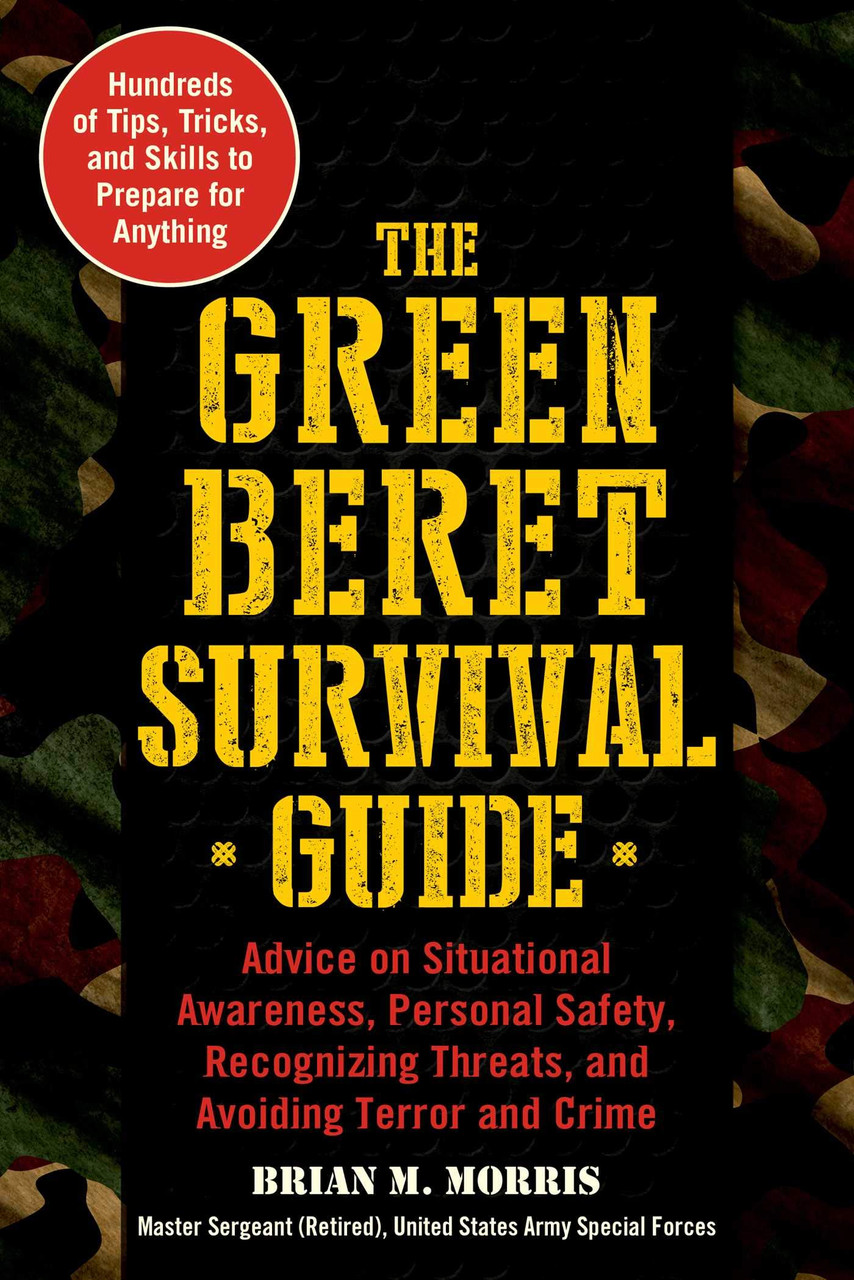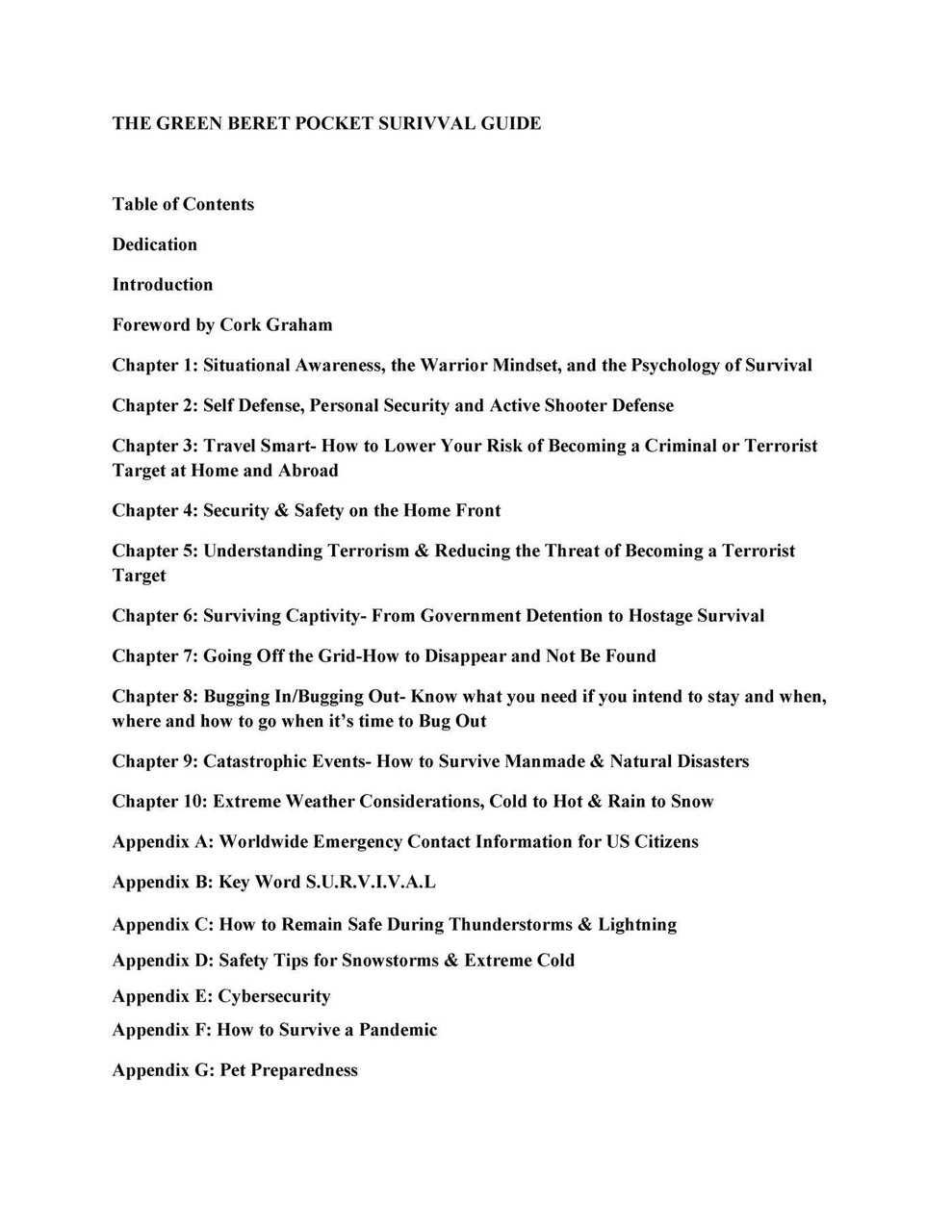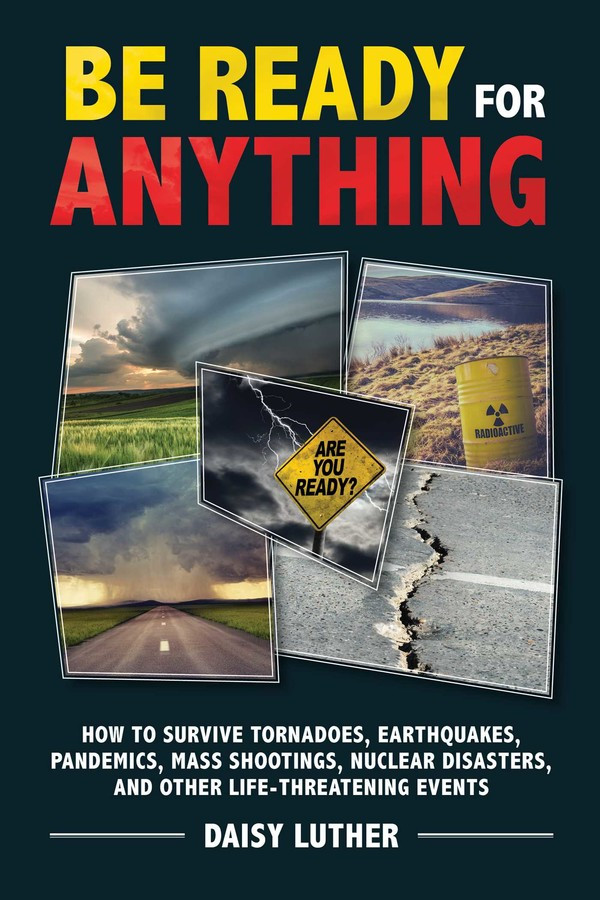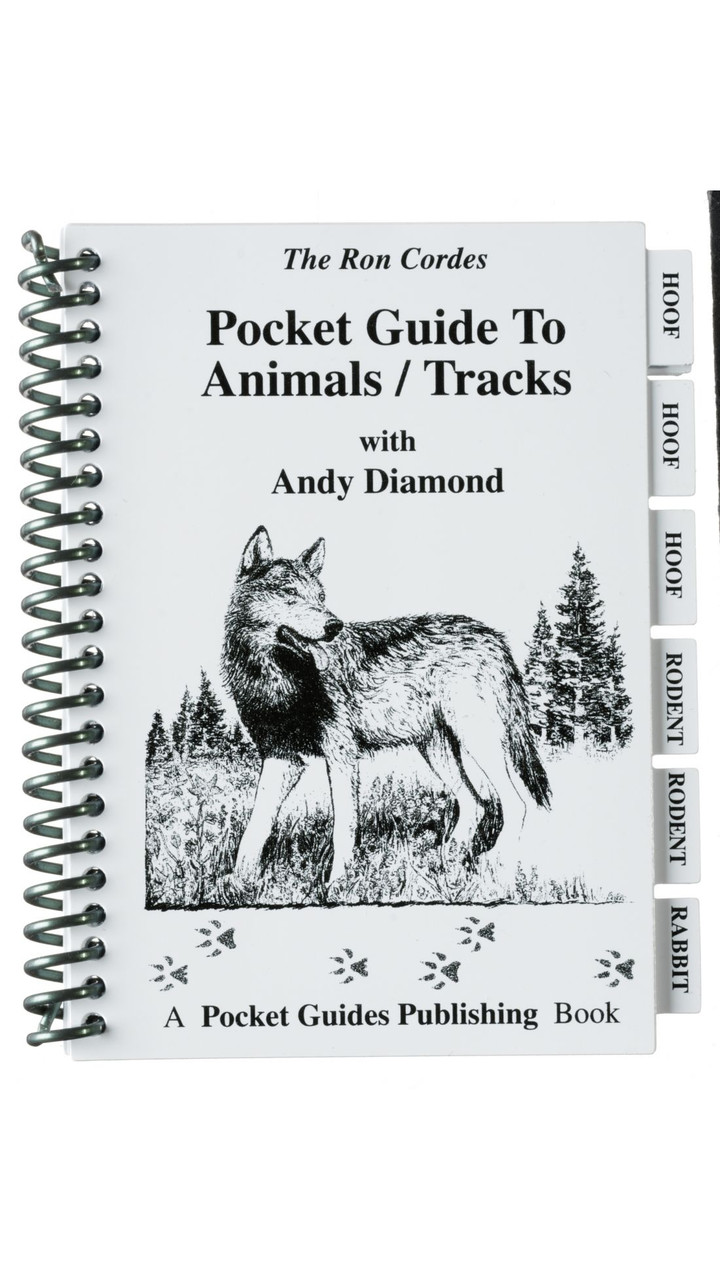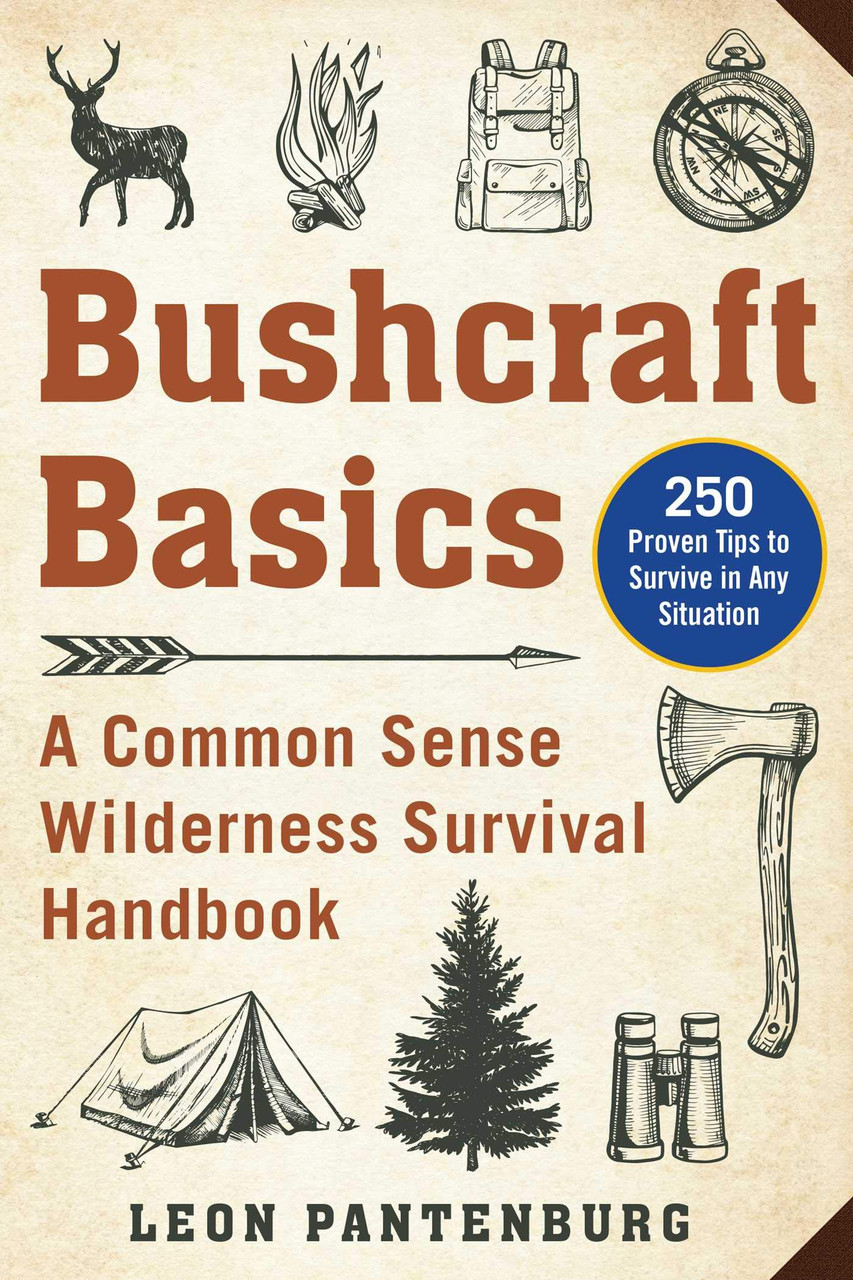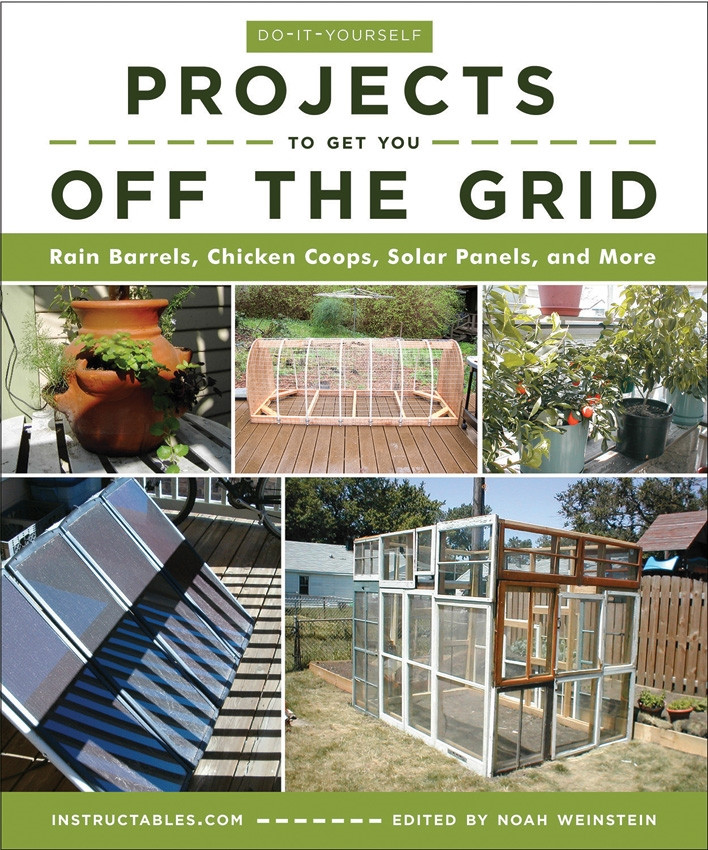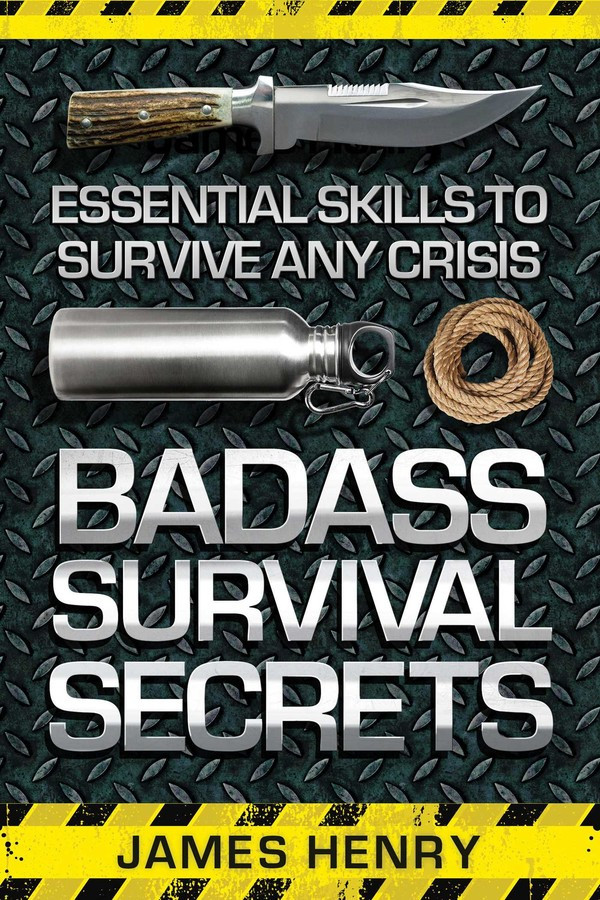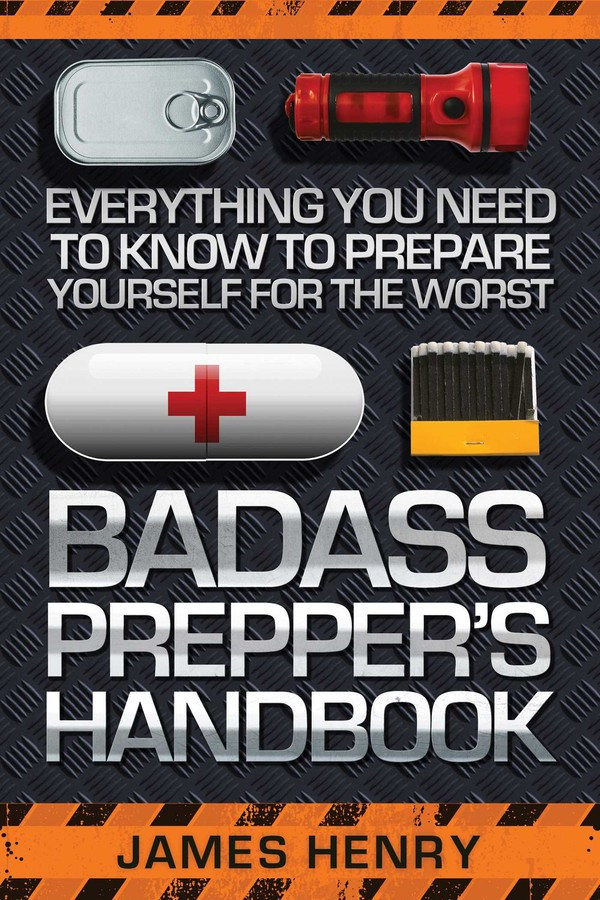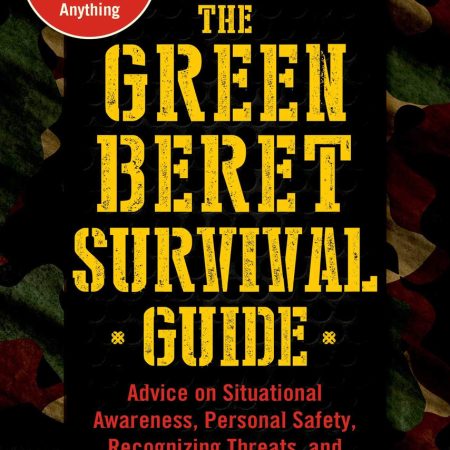| Content | Today's society is one in which we, as individuals, are constantly barraged by the threat of domestic terrorism. The ever-present fear for your safety and the safety of those we love can overwhelm you if you aren’t sure how to protect yourself. Luckily, distinguished combat veteran Brian M. Morris's Green Beret Survival Guide is here to help ease your fears.
Using his firsthand knowledge from the field as a Green Beret, Morris concisely outlines the steps that are necessary towards increasing one’s personal safety. Over the course of several chapters, Morris describes the importance of situational awareness, meaning staying alert, being aware of your surroundings, and understanding the reality of threats that you may face in any given situation. An individual with good situational awareness never takes anything for granted and makes security a part of his or her daily routine. By being observant and practicing several different methods of observation, one can avoid falling prey to terrorist, thieves, and other criminals.
| Will you be a ready for a dozen different kinds of disasters, including hurricanes, civil unrest, mass shootings, and wildfires?
You want to be prepared for whatever emergencies come your way. While prepping for a dozen different disasters may sound like a daunting task, there’s good news.
Preparing for a wide variety of disasters requires the same basic supplies as preparing for one or two. For each event, there will be some special steps, unique information, and precautions you need to take, along with a few additional supplies, but your essentials will be the same. Learn how to prepare for:
- Earthquakes
- Tornadoes
- Hurricanes
- Winter Storms
- Wildfire Evacuations
- Pandemics
- Nuclear Disasters
- Mass Shootings
- Civil Unrest
- Economic Crises
- And More!
With directions, helpful appendices, checklists, and general guidance to getting prepped, this book will get you away from panic and straight to safety. | The Pocket Guide To Animals / Tracks lets you decipher the clues left behind in nature. Fully illustrated, the Pocket Guide to Animal Tracks features illustrations of numerous birds and other animals, with their tracks alongside, so you can quickly and easily figure out the tracks you're looking at. A ruler along the page edge lets you size the footprints you find for even better identification. The Pocket Guide to Animals and Tracks is a must-have for anyone who spends time outdoors, from hikers and backpackers to birders and nature lovers!
| In Bushcraft Survival, Pantenburg delivers practical tips and anecdotes that cater to readers who are looking to improve their outdoor skills and prepare for every potential disaster. Drawing from his personal experience as an avid outdoorsman and years as a journalist, Pantenburg lays out easy-to-follow steps to prep for both short and long-term survival situations.
As natural disasters become increasingly present and people continue to rely on reality television shows for survival tips, developing bushcraft abilities is becoming more and more important. In this thorough handbook, Pantenburg covers a wide range of topics, including:
- Developing a survival mindset
- Crafting survival kits
- Choosing clothing best suited to survival
- Picking materials and objects to help you survive
- Building a variety of shelters
- Deciding what survival tools you should pack and which you should leave at home
- Effectively make a fire using different techniques
Filled with time-tested techniques and first-hand experience, Bushcraft Survival is the ideal book for those who want to step up their hiking or camping game, as well as those who are searching for relevant advice on emergency preparedness.
|
- Sections dealing with all kinds of emergency situations
- Great companion book to the Pocket Guide to Emergency First Aid
- Spiral binding lets pages lay flat for easy reading in the field
- Side tabs let you find the right chapter quickly
- Fully waterproof, dirt-proof, tear-proof, wind-proof, kid-proof.
- Pages are made of specially formulated, heat-treated, PVC plastic - polished, resin-coated polyvinylchloride polymer). Pages feature:
- Bright white printing surface - all printing is clear and precise
- Virtual indestructibility - the pages can't rip or tear, and the corners won't bend over
- Flexibility - pages can bend without breaking
- Washable surface - just wipe clean after use or wash in water
- Steel rule die cut with polished edges - the corners won't poke you while in your hand or in your pocket, as often happens with plastic printed materials
- Will not warp, fade or deteriorate. (Keep out of direct sunlight for prolonged periods - nothing can prevent the sun's ultraviolet rays from "yellowing" any kind of paper or plastic. Under normal conditions it will take years of use for these Pocket Guides to "yellow", and even then they will remain clear and perfectly readable!)
| Illustrated with full-color photographs accompanying easy-to-follow instructions, this unique collection utilizes the best that the online community has to offer, a mammoth database churning out ideas to make life better, easier, and, in this case, greener.
Here are fun, useful projects designed to get you thinking creatively about going green. Let the Instructables team illustrate just how simple it can be to make your own backyard chicken coop or turn a wine barrel into a rainwater collector.
Here, you will learn to:
- Clip a chicken’s wings
- Power your lawn mower with solar power
- Create a chicken tractor for the city
- Water your garden with solar power
- Build a thermoelectric lamp
- Create an algae bioreactor from water bottles
- And much more!
Get started today—making your life greener. Get off the grid!
|
